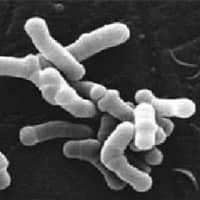Bifidobacteria were discovered in 1899 in the faeces of breast-fed infants. Bifidobacteria is a genus of gram-positive, nonmotile (non-spore forming), anaerobic bacteria. They are ubiquitous in the gastrointestinal tract, vagina and mouth of mammals, including humans. Bifidobacteria are one of the major genera of bacteria that make up the gastrointestinal tract microbiota in mammals.
These bacteria are typically the most abundant species present in the intestine of breast-fed infants and are regarded as a primary reason for the infants’ greater resistance to disease. Bifidobacteria are recognised for their key role in the human intestinal microflora throughout life.
Healing Properties
- Probiotic: Bifidobacterium lactis (Bl-04) In vitro studies have shown that Bifidobacterium lactis (Bl-04) is extremely resistant to low pH conditions (which means it exhibits tolerance to the highly acidic conditions present in the stomach) and survives the presence of bile at concentrations present in the duodenum. This helps ensure that the probiotic microorganisms remain viable at the time of ingestion to allow them to confer their health benefits to the host. This implies that the probiotic survives GI tract passage and colonizes the host epithelium.[1]
